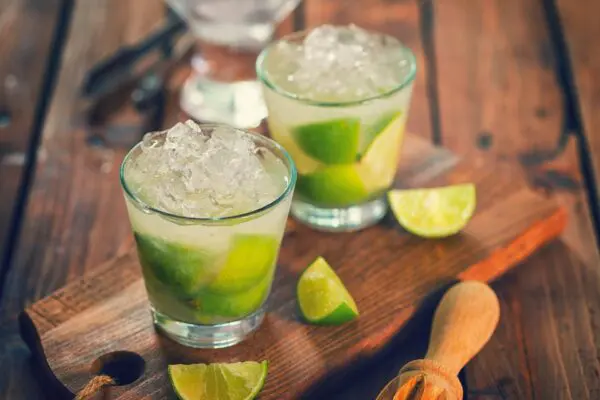Creating your own Cocktail recipe Part 1: Understanding the Chemistry
What do bartenders and chemists have in common? They both know how to manipulate the properties of raw ingredients and combine them in a way to forge something new.
Cocktail creation is where are art and chemistry collide and a deeper understanding of the chemical reactions that occur in cocktails can help bartenders in their quest to create something enticing and exciting.
The Mojito
The mojito is a classic cocktail created in Cuba, famously known around the world for its refreshing minty flavor – and the mojitos fame is due in part to its sophisticated use of chemistry.
Mint is easily identifiable by its color and aroma, which is caused by its high concentration of chlorophyll, creating its characteristically dark green hue and methanol, creating the distinctive minty aroma and flavor.
The methanol in mint triggers the TRPMA receptors in the skin and tongue achieving the famous cooling sensation.
Whilst methanol creates a pleasing flavour, chlorophyll doesn’t taste as good. To improve mojitos flavour, increase the methanol and reduce chlorophyll, mixologists slap the mint to stimulate the release of methanol, without breaking the stems releasing the bitter and earthy chlorophyll.
The chemistry in mojitos extends to its presentation. Classically served in a highball glass over crushed ice, garnished with a piece of fresh mint – crushed ice is essential for mojitos as it rapidly cools liquid whilst gently diluting the cocktail.
To upgrade a mojito or any cocktail served over crushed ice, bartenders should use ice nuggets, that are slightly larger, dryer, and harder than crushed ice flakes. High-quality ice nuggets have a slower dilution speed and their high clarity improves the aesthetic and longevity of cocktails.
The Painkiller
Another tropical cocktail that draws on chemical knowledge to create a luxurious finish is the Painkiller. Fresh pineapple juice is a core ingredient in a painkiller, whilst being sweet and delicious, pineapples contain bromelain, an enzyme that encourages digestion by helping break down proteins.
Bromelain is what causes that tangy and sometimes itchy sensation people feel when eating pineapples. This is where coconut milk comes into play.
Coconut milk contains a variety of ten proteins in which gives the bromelain another protein to digest and help neutralize the pH, reduce the tangy sensation of the pineapple, whilst retaining its sweetness. The coconut milk also acts as an emulsifier creating the Painkiller’s famous rich texture.
Timo Janse, Owner at Flying Dutchman Cocktails said: “with all tiki drinks, it’s a balance between the strength and dilution. You want some dilution in this cocktail and to create that dilution you shake with cubed ice and served over crushed ice, so make sure you use the best quality ice for both”. Learn how to make a Painkiller and many other things about cocktails, bars, and ice on our Youtube Channel.
The Whiskey Sour
A classic cocktail that owes its defining characteristic to chemistry. The infamous velvety texture and frothy head of a whiskey sour is created by activating the proteins in egg whites through dry shaking.
Egg whites contain hydrophobic and hydrophilic amino acids that are separated in their natural state, but when vigorously shaken are rearranged. Hydrophilic acids attract water and hydrophobic acids repel water – when shaken the acids form a bond in the air pockets, this new structure creates the foam the whiskey sour is famous for.
To ensure the foam doesn’t lose its frothy light texture when combining it with the whiskey, lemon juice, and sugar, bartenders should use a single large ice cube to rapidly cool the cocktail whilst minimizing the dilution of ingredients.
Traditionally served in a coupe glass to showcase the foam, however, a popular alternative presentation is serving the whiskey sour in a tumbler glass with a single large ice cube.
How chemistry can help creativity
A key responsibility of owning a bar is creating a standout menu that will entice customers to try new concoctions. Approaching the cocktail creation process with a little chemistry knowledge will help bar owners pick and pair ingredients that complement each other.
Timo Janse, states: “You have to constantly re-invent yourself and it’s almost never the case when you start something it is immediately successful. So you need to constantly keep working on the process, product and keep giving it your attention.”
Bar owners should consider all the senses when creating original cocktails or revamping classic recipes and ask questions that go beyond taste and smell.
What glass will work best? What kind of texture and mouthfeel will the cocktail have? What size and shape ice will complement this cocktail? What other sensory elements will help this cocktail stand out?
By thinking holistically about the customers’ experience and applying a little scientific know-how, bar owners can create something that will attract new customers and keep existing customers coming back for more.
To find the perfect ice machine for your cocktail creations visit the contact us page to connect with a regional consultant and learn more about Hoshizaki’s range of ice machines and time-saving technologies.
